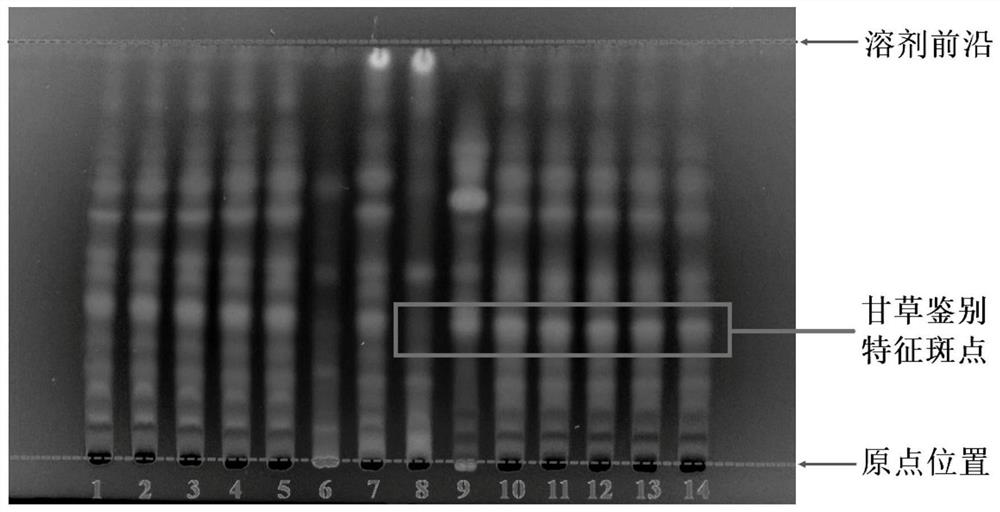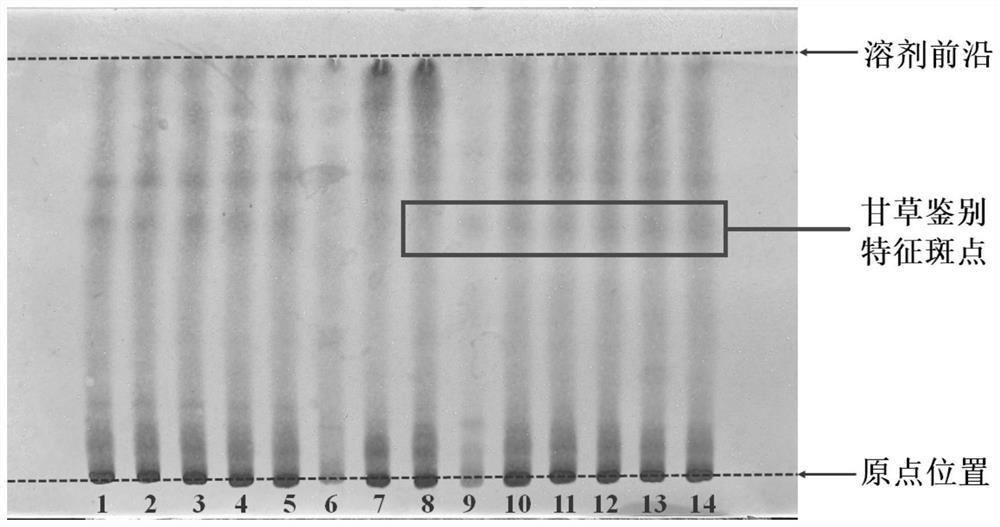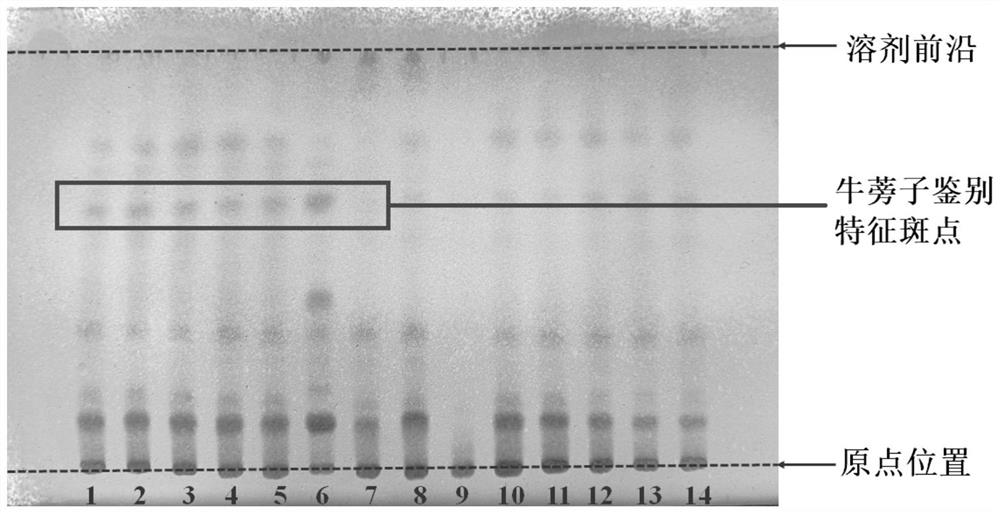Thin-layer chromatography method for simultaneously identifying four single medicinal materials from Lonicera and Forsythia powder
A technique of thin-layer chromatography and Yinqiaosan, applied in the field of thin-layer chromatography, can solve the problems of complicated operation, single index and high cost, and achieve the effects of good repeatability, quality control and lower detection cost.
- Summary
- Abstract
- Description
- Claims
- Application Information
AI Technical Summary
Problems solved by technology
Method used
Image
Examples
Embodiment 1
[0034] (1) Preparation of the test solution:
[0035]Weigh 10.00g of Yinqiao Powder, add 30ml of methanol, soak for 1h, sonicate for 30min, let it stand at room temperature, filter, add 10mL of methanol to the residue, mix well, filter, combine the filtrate, evaporate the filtrate to dryness in a water bath, add 10mL of water and heat to dissolve, then Add 1mL of purified water to rinse once, and combine the water solution; extract the water solution with water-saturated n-butanol, extract twice, 20mL each time, shake vigorously during extraction, and combine the n-butanol layer; add water to the n-butanol layer and wash twice , 20mL each time, discard the water, and collect the n-butanol layer; add 30mL of petroleum ether (60-90°C) to the n-butanol layer solution, shake until the layers are obvious, and collect the upper layer solution; then add 10% Wash once with 20mL of methanol solution, shake gently to prevent emulsification, collect the upper layer solution, evaporate to...
Embodiment 2
[0044] (1) The preparation method of the test solution is the same as in Example 1;
[0045] (2) The preparation method of the negative control solution is the same as in Example 1;
[0046] (3) The preparation method of the contrast medicinal solution is the same as in Example 1;
[0047] (4) TLC identification:
[0048] Common identification of burdock and licorice: Take 3 μl each of the test solution, the negative control solution lacking burdock, the reference medicinal solution of burdock, the negative control solution lacking licorice, and the reference medicinal solution of licorice, and place them on the same thin-layer plate G respectively. Butyl acetate-95% ethanol-ammonia water (volume ratio is 8:5:0.4) is the developing agent, develop 8cm, take it out, dry it, and put it under a 365nm ultraviolet lamp for observation. At the position of , the same color spot is displayed, but the position of the corresponding spot is R f The value is too small;
[0049] Joint i...
Embodiment 3
[0051] (1) The preparation method of the test solution is the same as in Example 1;
[0052] (2) The preparation method of the negative control solution is the same as in Example 1;
[0053] (3) The preparation method of the contrast medicinal solution is the same as in Example 1;
[0054] (4) TLC identification:
[0055] Common identification of burdock and licorice: Take 3 μl each of the test solution, the negative control solution lacking burdock, the reference medicinal solution of burdock, the negative control solution lacking licorice, and the reference medicinal solution of licorice, and place them on the same thin-layer plate G respectively. Butyl acetate-95% ethanol-ammonia water (volume ratio is 8:2:0.4) is the developing agent, develop 6cm, take it out, dry it, and observe it under a 365nm ultraviolet lamp. At the position of , the corresponding spots cannot be completely separated.
[0056] Joint identification of light tempeh and nepeta ears: absorb 3 μl each o...
PUM
 Login to View More
Login to View More Abstract
Description
Claims
Application Information
 Login to View More
Login to View More - R&D
- Intellectual Property
- Life Sciences
- Materials
- Tech Scout
- Unparalleled Data Quality
- Higher Quality Content
- 60% Fewer Hallucinations
Browse by: Latest US Patents, China's latest patents, Technical Efficacy Thesaurus, Application Domain, Technology Topic, Popular Technical Reports.
© 2025 PatSnap. All rights reserved.Legal|Privacy policy|Modern Slavery Act Transparency Statement|Sitemap|About US| Contact US: help@patsnap.com



